Following our QuickRead on Categorising and Prioritising Ideas Part 1, we walked you through some…

ChangeWise Quick Reads: The 5 Principles of Lean
In this Quick Read, we take a look at the 5 Principles of Lean. We will explore where they come from, what they are, how to identify them and the benefits of using these principles in your organisation.
Where did the 5 Principles of Lean Originate?
The 5 Principles of Lean are process orientated concepts initially described in 1997 by Lean Enterprise Institute founders, James P. Womack and Daniel T. Jones.
What are the 5 Principles?
Value, Value Stream, Flow, Pull, and Perfection.
The idea is that the principles build on each other, creating a cycle of continuous improvement.
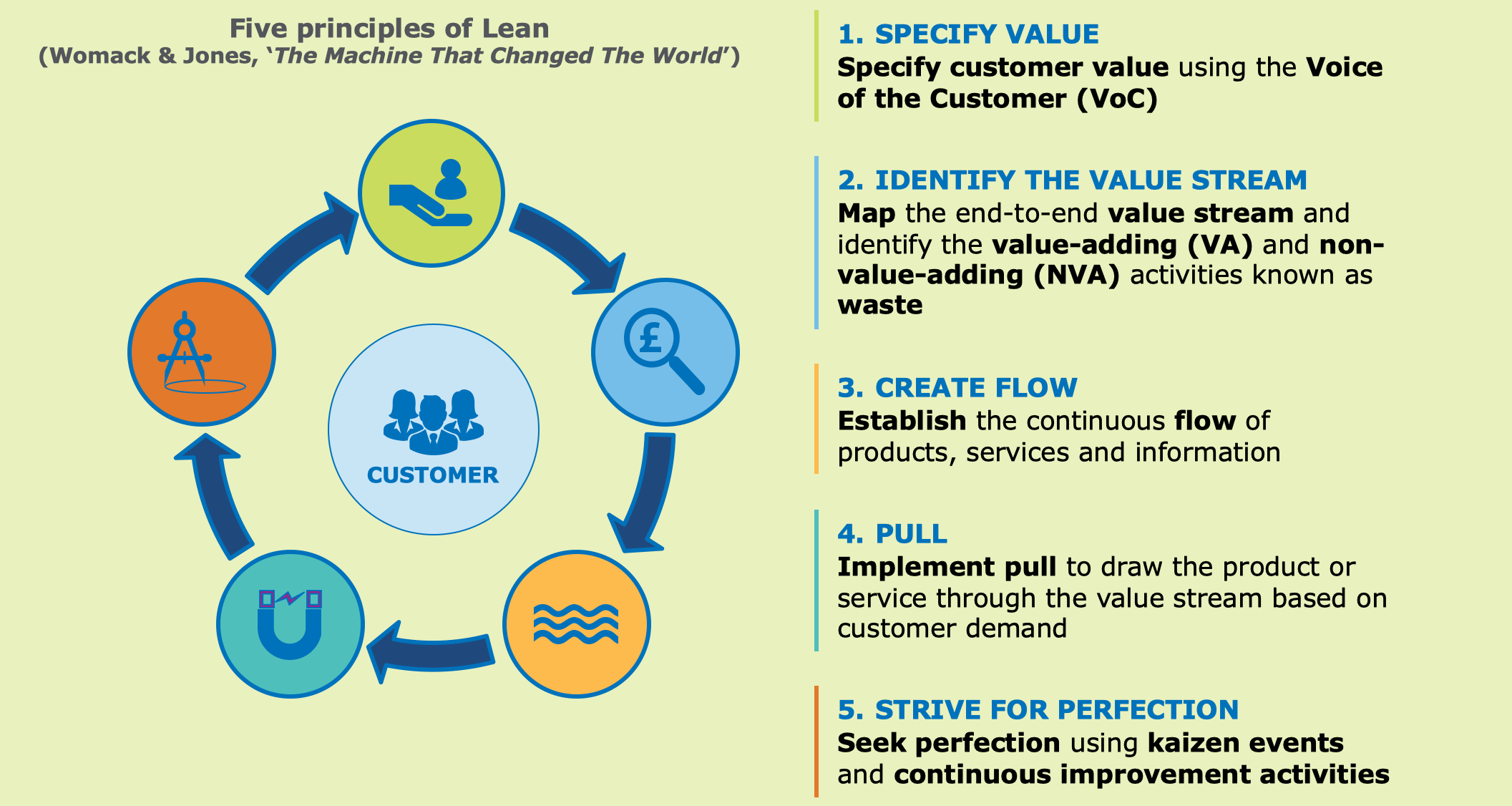
Let’s take a look at each principle in more detail:
Principle 1: Value

Value can be defined as ‘what a customer would willingly and knowingly pay for’.
For example; next day delivery of well packaged, correct products.
How can I identify Value?
- Understand clearly who your customer is and their wants and needs
- Use the ‘Voice of the Customer’ (VoC) to gather feedback (good & bad) to define value
- Understand what happens to the product or service at each stage of the process so you can understand what the process needs to deliver
- Improve capabilities/attributes to be the best in terms of cost, quality and delivery
The challenge is to understand how your customers define and prioritise the various needs and expectations they have of your products and services.
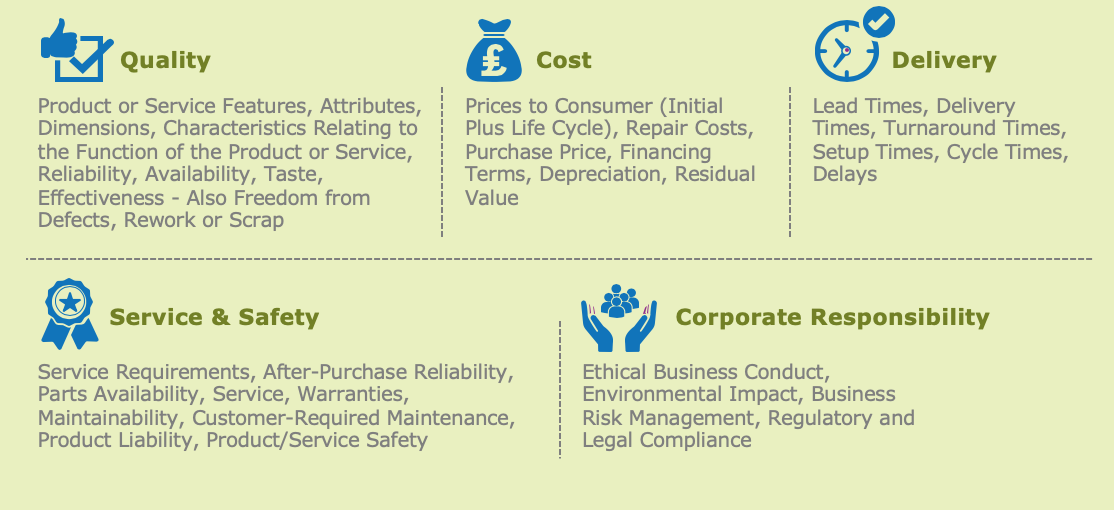
What are the Benefits?
You will create a ‘customer centric’ performance culture. To supply the wrong service in the right way is waste, so supply the right service to reduce wasted time and increase employee and customer satisfaction.
Principle 2: Map the Value Stream
This is one of the most important Lean management tools. It is the end-to-end (E2E) sequence of steps taken to create customer value, and it enables the team to visualise the steps needed from product creation to customer delivery.
How do I map the Value Stream?
- Map the end to end steps in the process
- Identify the Value Added (VA) steps and the Non-Value Adding (NVA) steps
- Quantify the time, resources and quality in these steps
- Analyse the material and information flow
- Focus on waste removal
- Focusses on the end-to-end process design not just a ‘silo’, improving the whole – not just optimizing the parts
What are the benefits of mapping the value stream?
Value Stream Mapping will help you understand the physical flow of material and information in your process, and therefore identify and remove/reduce waste. This will increase productivity and improve bottom line. (see our Quick Read on Value Stream Mapping).
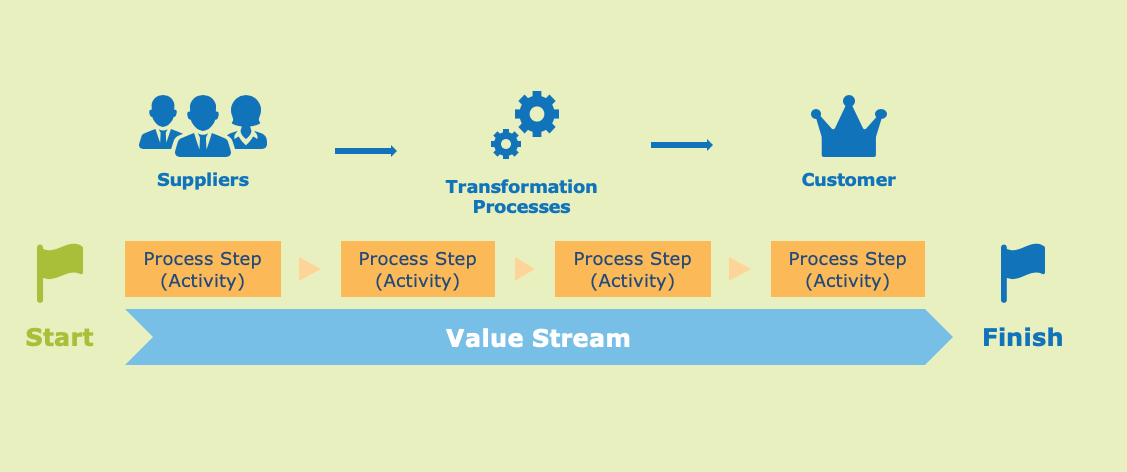
Principle 3: Create Flow
Products or services should move fluidly through the value stream without interruption.
This requires the elimination of work-in-progress, rework and waiting in order to allow the process to flow like a river.
For example, think about the cheque clearing process; once banked, cheques are often batched and transported to a clearing centre – this interrupts flow and creates waste.

How do I create Flow?
The quickest, easiest and cheapest way to create flow and improve a process is to eliminate ‘waste’. In Lean thinking, the 8 classic wastes of the Toyota production system are as follows:
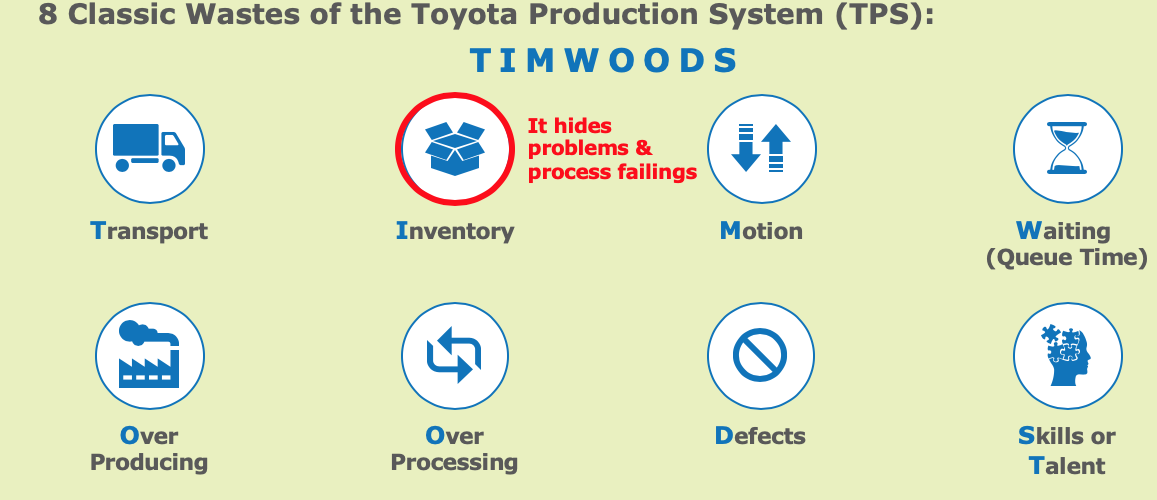
In our cheque clearing example above, there are several potential wastes including, Transport, Inventory, Waiting and Over-Processing.
Remember! Think about Waste from the customer’s perspective!
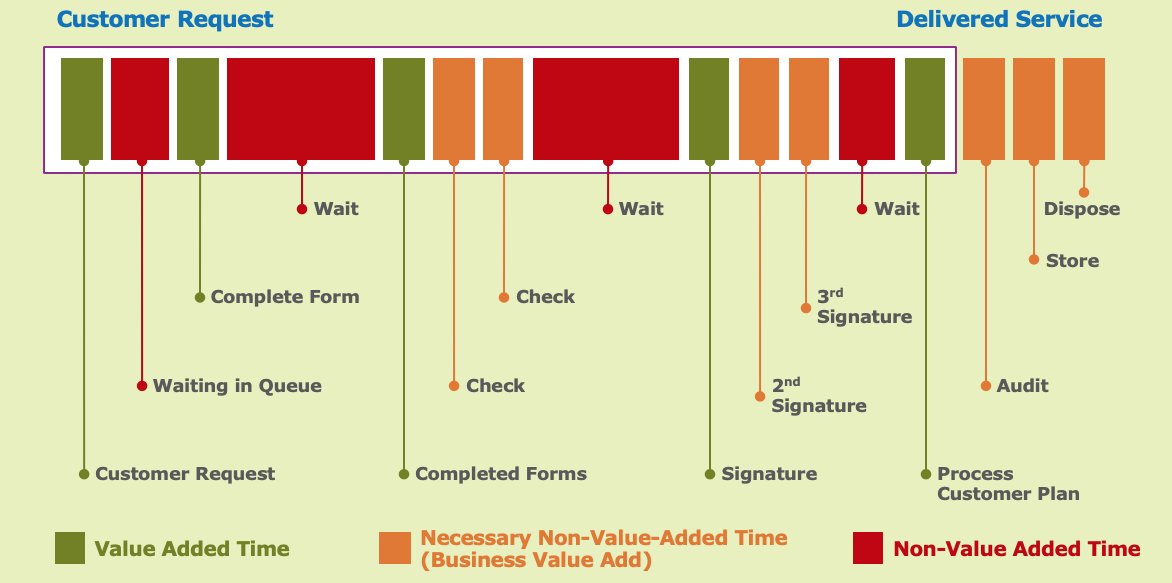
For more information, take a look at our Quick Reads on The 8 Lean Wastes and The 7 Service Wastes.
What are the benefits of applying the Principle of Flow?
Implementing Flow will free up time and/or capacity to do more, along with reducing costs and improving both customer and employee satisfaction.
Principle 4: Implement Pull
Pull is simply matching supply with demand, and focusing on the rate at which the product or service flows through the value stream.

How do I implement Pull?
- Process only what the customer needs when they need it – then stop
- Pull all products and services through the value stream synchronised to the drumbeat (Takt time) of real customer demand
- If anywhere a step stops, then all preceding steps stop
- All work steps must be completed within the Takt Time
What are the benefits of implementing Pull?
Implementing Pull will enable your operation to eliminate waste, optimise cost efficiencies and meet demand. See our ChangeWise Quick Reads on ‘Kanban’ and ‘Theory of Constraints’ for more details.
Principle 5: Perfection
A Continuous Improvement (CI) mind-set is essential to create a Lean culture. It means incremental improvement of products, processes, or services over time, to eliminate waste to improve workplace functionality, customer service, or product performance. It involves everyone from senior and middle management to front line staff. Failing to master perfection is the single most likely cause of rework, customer dissatisfaction, and excess admin cost.

How do I implement Perfection?
Once you understand where value exists in your process, have your value streams identified, waste removed, and flow and pull are introduced, you can begin the process again – and continue until a state of perfection is reached.
What are the benefits?
Implementing the fifth principle will lead to a culture of continuous improvement, and ensure your business is constantly adapting to its environment in order to remain competitive.
In Summary:
The Five Principles of Lean are Value, Value Stream, Flow, Pull, and Perfection. The idea is that the principles build on each other to create a cycle of continuous improvement.
Implementing the Five Principles of Lean has many benefits, including greater productivity, flexibility and responsiveness, improved quality, reduced defects and lead-times, along with increased customer satisfaction and improved staff morale.
Want to know more? Contact us at info@changewise.co.uk
ChangeWise believes employee engagement is the foundation for successful Change. Training and coaching your people to use simple continuous improvement techniques will enable your organisation to continuously adapt and stay ahead in a constantly changing and challenging environment.
For industry updates and interesting Lean Change insights, connect with us on LinkedIn.
Find out more about our Public Training Courses



